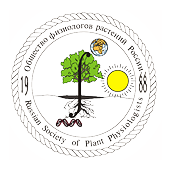Новости науки и практики // Февраль 2017

Largest Populus SNP dataset holds promise for biofuels, materials, metabolites
Researchers at the Department of Energy's Oak Ridge National Laboratory (ORNL) have released the largest-ever single nucleotide polymorphism (SNP) dataset of genetic variations in poplar trees, information useful to plant scientists as well as researchers in the fields of biofuels, materials science, and secondary plant metabolism.
https://www.eurekalert.org/pub_releases/2017-01/drnl-lps011717.php
В США стартуют продажи нетемнеющих ГМО-яблок
Яблоки, которые не темнеют в районе среза, являются разработкой генных инженеров из канадской компании Okanagan Specialty Fruits.
https://naked-science.ru/article/sci/v-ssha-startuyut-prodazhi
Targeted metabolomics shows plasticity in the evolution of signaling lipids and uncovers old and new endocannabinoids in the plant kingdom
Large-scale synthesis and release of nanomaterials in environment is a growing concern for human health and ecosystem. Therefore, we have investigated the cytotoxic and genotoxic potential of zinc oxide nanoparticles (ZnO-NPs), zinc oxide bulk (ZnO-Bulk), and zinc ions (Zn2+) in treated roots of Allium cepa, under hydroponic conditions.
http://www.nature.com/articles/srep40685
Functional characterization of a gibberellin receptor and its application in alfalfa biomass improvement
Bioactive gibberellins (GAs) are essential phytohormones involved in the regulation of many aspects of plant development. GA receptors are crucial in GA signal transduction in plants. Here, we discovered that GoGID1 can interact with the DELLA proteins of Arabidopsis in the presence of gibberellic acid.
http://www.nature.com/articles/srep41296
Conifer cones bear their ages well, and still move it
Fossil conifer cones can still move their individual seed scales after millions of years, biologists have found. The cones analyzed in a new study represent the oldest known plant structures that are still capable of movement and can also serve as a model for bioinspired technical applications with low maintenance requirements.
https://www.sciencedaily.com/releases/2017/01/170111093520.htm
Metabolic profiling of root exudates from two ecotypes of Sedum alfredii treated with Pb based on GC-MS
Phytoremediation is an effective method to remediate Pb-contaminated soils and root exudates play an important role in this process. Based on gas chromatography-mass spectrometry (GC-MS) and metabolomics method, this study focuses on the comparative metabolic profiling analysis of root exudates from the Pb-accumulating and non-accumulating ecotypes of Sedum alfredii treated with 0 and 50 μmol/L Pb. The results obtained show that plant type and Pb stress can significantly change the concentrations and species of root exudates, and fifteen compounds were identified and assumed to be potential biomarkers.
http://www.nature.com/articles/srep39878
В МГУ заработал один из крупнейших в мире цифровых гербариев
Гербарий Московского университета – один из ведущих центров изучения и документации разнообразия растений. Первое упоминание о нем относится еще к 1780 году, сейчас же он представляет собой коллекцию мирового значения, с объемом фондов более 1 000 000 образцов. Здесь сосредоточены как ценнейшие исторические реликвии, связанные с именами Карла Линнея и Джеймса Кука, так и обширные материалы последующих исследователей флоры.
https://www.nkj.ru/news/30601/
Desert plants, got ’em covered…
Many aspects of plant biology, especially anatomical topics, are oft-neglected or simply overlooked. This item is an opportunity to give a bit of publicity to the outermost layer of the aerial parts of plants, the cuticle – a thin continuous membrane consisting of a polymer matrix (cutin), polysaccharides and associated solvent-soluble lipids.
https://aobblog.com/2017/01/desert-plants-got-em-covered/
Why did trees start growing up? (or did they just start growing down?)
Today trees reach for the light. However, a recent article says that back in the Devonian period, plants played by different rules.
https://aobblog.com/2017/01/trees-start-growing-just-start-growing/
Two strategies by epiphytic orchids for maintaining water balance: thick cuticles in leaves and water storage in pseudobulbs
In a new study published in AoB PLANTS, Yang et al. found two different strategies employed by epiphytic orchids for sustaining water balance: conservation of water in leaves with thick cuticles and water storage in pseudobulbs. The species with thin cuticles tend to have pseudobulbs with high water storage capacity that compensates for their faster rates of water loss. These outcomes are beneficial for the understanding of the adaptive water-use strategies in epiphytes.
https://aobblog.com/2017/01/two-strategies-epiphytic-orchids-maintaining-water-balance-thick-cuticles-leaves-water-storage-pseudobulbs/
Arabica coffee genome sequenced
The first publlic genome sequence for Coffea arabica, the species responsible for more than 70 percent of global coffee production, was released today by researchers at the University of California, Davis
https://www.eurekalert.org/pub_releases/2017-01/uoc--acg011317.php
Protein research: The computer as microscope
Using a combination of infrared spectroscopy and computer ssimulation, researchers have gained new insights into the working of protein switches. With high temporal and spatial resolution, they verified that a magnesium atom contributes significantly to switching the so-called G-proteins on and off.
https://www.eurekalert.org/pub_releases/2017-01/rb-prt011617.php
New Colombian plant discovered by Kew scientist honors Colombian president
A new plant species from Northeastern Colombia has been named Espeletia praesidentis. The plant, from the genus Espeletia in the sunflower family, was discovered by a Colombian botanist from the Royal Botanic Gardens Kew.
https://www.eurekalert.org/pub_releases/2017-01/rbgk-ncp011117.php
The effects of nitrogen form on root morphological and physiological adaptations of maize, white lupin and faba bean under phosphorus deficiency
In a recent study published in AoB PLANTS, Liu et al. compared the mechanisms of root adaptation of maize, white lupin and faba bean to phosphorus deficiency under supply of Ca(NO3)2 and NH4NO3. Phosphorus deficiency decreased shoot growth but increased root growth in maize and faba bean. It enhanced the release of protons, organic acid anions and acid phosphatase from the roots of white lupin and faba bean.
Новости
Новости науки и практики // Июль 2024
Обзор научных новостей, опубликованных во всемирной паутине за последний месяцНовости науки и практики // Июнь 2024
Обзор научных новостей, опубликованных во всемирной паутине за последний месяцНовости науки и практики // Май 2024
Обзор научных новостей, опубликованных во всемирной паутине за последний месяц


Объявления
Записей не найдено.



